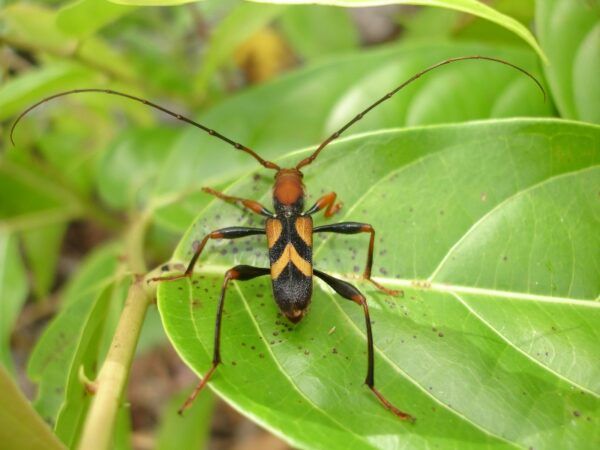
Summer Invasive Tree Pests in Seattle
Are you doing your part to protect your landscaping investment and minimize the impact of summer invasive tree pests in Seattle? All it takes is a simple, 10-minute tree inspection by yourself or a Seattle tree pest services expert to protect the state’s green spaces. August is the ideal time to ID invasive insects, when the summer heat sends pests out into the open. What pests should you be on the lookout for?
Asian Giant Hornets
These pests have recently made headlines, popping up in the US for the first time just north of Seattle in 2020. Dead wasps continue to be found. They are massive, with a 1.5-inch striped body, yellow/orange heads, and a 3-inch wingspan. It’s unknown how long Asian Giant Hornets have been in the country, their population numbers or reach. The hornet’s painful sting can be dangerous to humans, causing anaphylaxis that can be fatal. They are a serious danger to honeybees, attacking and killing entire colonies.
Long-Horned Beetles
Long-horned beetle larvae feed on tree wood, burrowing out when they reach adulthood. There are multiple species, including citrus, Asian, and red-necked varieties. Unlike native long-horned beetles, which feed on dying vegetation, these invasive species prey on healthy trees. They are known to attack over 40 species and are particularly dangerous to hardwoods.
Emerald Ash Borers
This Seattle pest is rapidly spreading west but has yet to be spotted in Washington. It has a narrow, half-inch long, iridescent green body. The ash borer feeds on sap, burrows under bark, and slowly drains trees of life. Due to its potential to devastate Washington forests, it’s essential to monitor for these invasive insects.
The Spotted Lanternfly
The spotted lanternfly feeds on tree sap, much like a mosquito sucks the blood of humans and animals. It is a striking insect, about an inch long, with black-spotted forewings and red-and-black patterned hind wings. The spotted lanternfly attacks a wide range of trees and plants, including fruit and nut trees and bushes, birch trees, willows, and more, stressing them to the point of death.
What to Do If You Spot Invasive Insect Species
If you think you see an invasive pest, upload a photo to the Washington Invasives mobile app, or contact your local arborist. Images should be as clear as possible, preferably using a coin or a pencil as a size marker to assist researchers in identifying insect species.
IMPORTANT: Do not attempt to photograph live Asian Giant Hornets.
Don’t let summer invasive tree pests in Seattle spread. Contact Arborwell Professional Tree Management at to request an arborist consultation and begin treatment today if you notice unwanted insect activity on your Seattle, Bellevue, Kirkland, Redmond, Kent, Edmonds, or Bothell property.
Asian Giant Hornets, Emerald Ash Borers, Long-Horned Beetles, pests, seattle trees